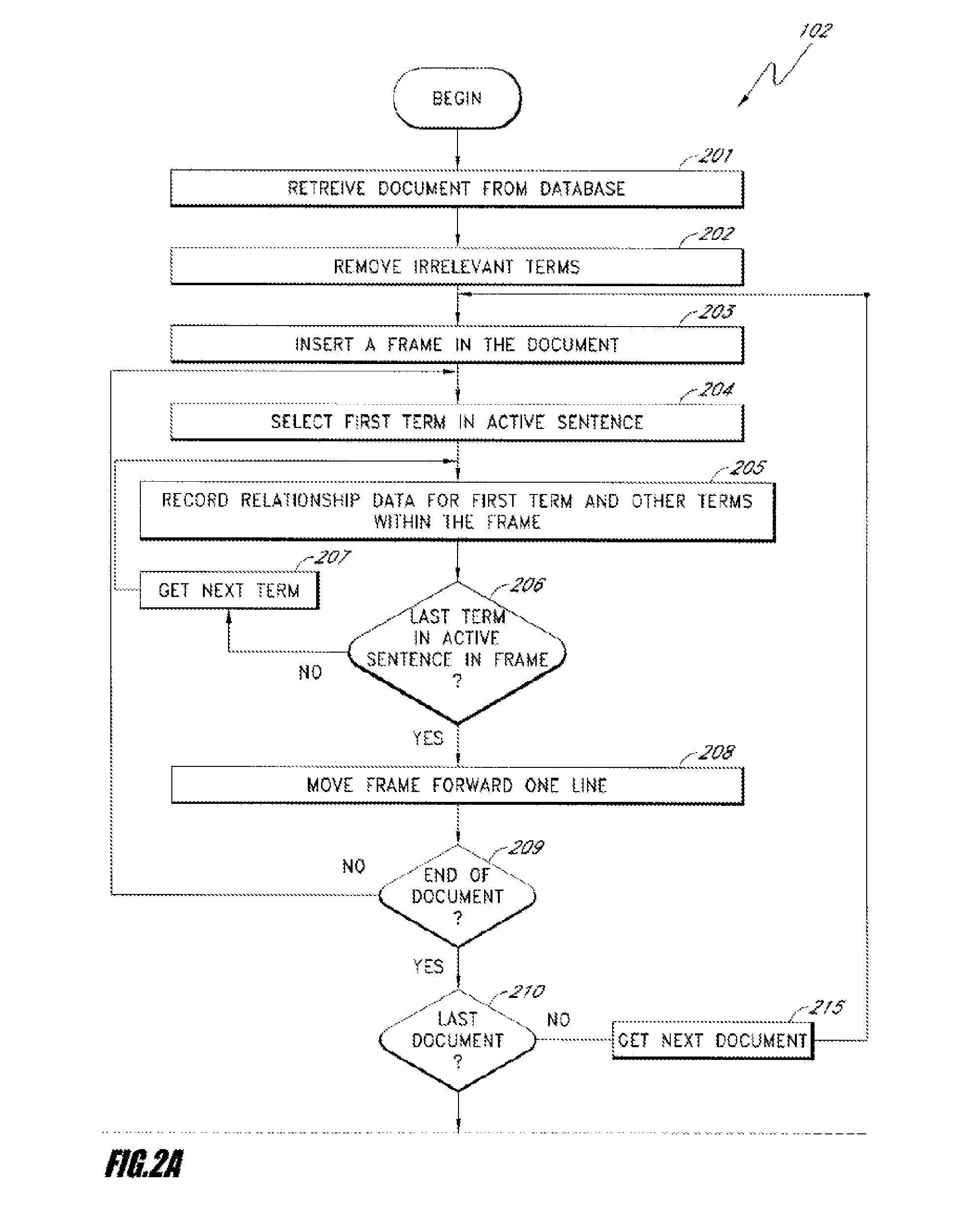Discovering and scoring relationships extracted from human generated lists
a technology of human generated lists and relationships, applied in the field of vector-based information storage and retrieval systems, can solve the problems of not giving relevance-based results to keyword searches, phrase-based searches often have nothing in common with user's search intent, and based searches do not simula
- Summary
- Abstract
- Description
- Claims
- Application Information
AI Technical Summary
Benefits of technology
Problems solved by technology
Method used
Image
Examples
Embodiment Construction
[0044]One embodiment disclosed herein is a computer method and system that extracts HGLs from an electronic database. In one embodiment, a context window is defined over a portion of the electronic database to determine if the data within the context window contains an HGL. As one example, the context window may be of a size that encompasses a portion or an entire movie review, and the electronic database may be a collection of movie reviews contained on various web pages. When the system finds an HGL within the context window, that HGL is stored in an archive that may be processed as described below.
[0045]Another disclosed embodiment is a computer method and system that creates and discerns relationships between different items in a collection. In one embodiment, a many-to-many relationship is created between data items in a data set. As one example, the data items may be genes, and the data set may be the GENBANK gene database. As will be described in more detail below, embodiment...
PUM
 Login to View More
Login to View More Abstract
Description
Claims
Application Information
 Login to View More
Login to View More - R&D
- Intellectual Property
- Life Sciences
- Materials
- Tech Scout
- Unparalleled Data Quality
- Higher Quality Content
- 60% Fewer Hallucinations
Browse by: Latest US Patents, China's latest patents, Technical Efficacy Thesaurus, Application Domain, Technology Topic, Popular Technical Reports.
© 2025 PatSnap. All rights reserved.Legal|Privacy policy|Modern Slavery Act Transparency Statement|Sitemap|About US| Contact US: help@patsnap.com



